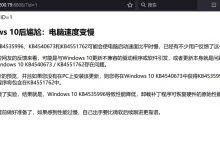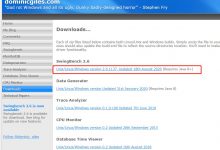1、建立使用字符函数的范例脚本
–select lower(region_name) from regions; –lower(string string)输出结果小写表示
–select upper(region_name) from regions; –大写
–select initcap(region_name) from regions; –首写字母大写,后面都小写
–select concat(street_address,city) from locations;
–concat(string1,string2)连接两个字符串(只能两个,如果要多个否则可以递归调用)
–select substr(street_address,5) from locations;
–substr(string string,int a,int b),截取字符串,其中a表示开始位置,b表示长度
–select length(street_address) as street_address_length from locations; –length(string)查看字符串长度
–select instr(street_address,‘i’,2,1) from locations where location_id=1000; –instr(母串,子串,起始位置,第几个)
–select lpad(street_address,20,‘x’) from locations; –左边填充字符x直到满20个,如果少于20个会只截20个
–select rpad(street_address,20,‘x’) from locations; –右边填充字符x直到满20个,如果少于20个会只截20个
–select trim(both ‘e’from street_address) from locations;
–trim(both|leading|trailing ‘e’ from street_address)去除两边、前面、后面的指定字符
–select street_address,replace(street_address,‘a’,‘i’) from locations; –将字符串里面a替换成i
2、建立数值函数规范脚本
–select location_id,round(location_id/110) from locations; –四舍五入
–select location_id,trunc(location_id/110,2) from locations; –截取,通常用于截取日期和数值
–select location_id,mod(location_id,233) from locations; –取模
3、建立日期函数使用脚本
–select to_char(sysdate,‘yyyy-MM-dd HH24:mi:ss’) from locations; –将日期转换为字符串
–select months_between(to_date(‘2009-02-28’, ‘yyyy-mm-dd’), to_date(‘2008-02-28’, ‘yyyy-mm-dd’)) as months from locations;
–输出一段时间中间相隔的月份
–select next_day(sysdate,‘星期四’) from locations;
–输出当前指定日期的下一个指定日期
–select last_day(sysdate) from locations;
–指定日期对应月份最后一天
–select trunc(sysdate) from dual; –默认截取到天
–select sysdate,round(sysdate),round(sysdate,‘ddd’),round(sysdate,‘day’),round(sysdate,‘month’),round(sysdate,‘year’) from dual;
–按照年、月、日四舍五入
4、建立有关转换格式的脚本
–select to_date(\’2005-01-01 \’,‘yyyy-MM-dd’) from dual; –转换成日期
–select to_char(sysdate,‘yyyy-MM-dd HH24:mi:ss’) from dual; –转换成字符
–select to_number(‘000012134’) from dual; –转换成数值
5、建立有关空值的脚本
select state_province,nvl(state_province, -1) from locations;
–如果oracle第一个参数为空那么显示第二个参数的值,如果第一个参数的值不为空,则显示第一个参数本来的值。
–select state_province,nvl2(state_province, -1,1) from locations;
–如果该函数的第一个参数为空那么显示第三个参数的值,如果第一个参数的值不为空,则显示第二个参数的值
–select nullif(5,5) from locations;
–NULLIF (expr1, expr2) ->相等返回NULL,不等返回expr1
–select coalesce(null,3,4,5) from dual;
–返回第一个非NULL表达式的类型(拓展:COALESCE(expression1,…n) 与此 CASE 函数等价)
6、建立有关case表达式的脚本
select location_id,
case location_id when 1000 then ‘low’
when 1100 then ‘midium’
else ‘high’
end
from locations;
–1. 简单case只能是when后面的表达式完全匹配case后的表达式,相当于 =,所以也不能匹配null。
–2. searched case可以作为比较条件,那么可以使用like、!=、between …and、<、=、is null、is not null等
–比简单case的使用更加广泛,完全可以替代简单case。
7、建立使用decode函数查询的范例脚本
select location_id,decode(location_id,1000,1,1100,2,1200,3,1300,4,5) from locations;
–decode (expression, search_1, result_1, search_2, result_2, …, search_n, result_n, default) 比较表达式和搜索字,如果匹配,返回结果;如果不匹配,返回default值;如果未定义default值,则返回空值。
8、比较case和decode的不同和应用场景
首先case和decode效果都一样,都能够较好处理表达式查询的问题,但是decode的代码比较简洁,而且也比较直观;但是case虽然表达式比较复杂,但是更加灵活,实现的功能比decode更多,decode主要是等值判断,若想要实现其他功能,要加上其他函数辅助实现。
有关脚本代码如下:
--select table_name from user_tables; --查看当前用户所有表--select table_name from all_tables; --查看所有用户的表--select table_name from dba_tables; --查看包括系统表select * from LOCATIONS;select * from regions;select lower(region_name) from regions; --lower(string string)输出结果小写表示select upper(region_name) from regions; --大写select initcap(region_name) from regions; --首写字母大写,后面都小写select concat(street_address,city) from locations; --concat(string1,string2)连接两个字符串(只能两个,如果要多个否则可以递归调用)select substr(street_address,5) from locations; --substr(string string,int a,int b),其中a表示开始位置,b表示长度--select length(street_address) as street_address_length from locations; --length(string)查看字符串长度--select instr(street_address,\'i\',2,1) from locations where location_id=1000; --instr(母串,子串,起始位置,第几个)--select lpad(street_address,20,\'x\') from locations; --左边填充字符x直到满20个,如果少于20个会只截20个--select rpad(street_address,20,\'x\') from locations; --右边填充字符x直到满20个,如果少于20个会只截20个--SELECT TRIM(both \'e\' FROM street_address) FROM locations; --TRIM(both|leading|trailing \'e\' FROM street_address)去除前面、后面、两边的指定字符--SELECT replace(street_address,\'a\',\'i\') FROM locations; --将字符串里面a替换成i--select round(location_id/110) from locations; --四舍五入--select trunc(location_id/110,2) from locations; --截取,通常用于截取日期和数值--select mod(location_id,7) from locations; --取模--select to_char(sysdate,\'yyyy-MM-dd HH24:mi:ss\') from locations;--select months_between(to_date(\'20090228\', \'yyyymmdd\'), to_date(\'20080228\', \'yyyymmdd\')) as months from locations;--select next_day(sysdate,\'星期四\') from locations;--select last_day(sysdate) from locations;--select trunc(sysdate) from dual; --默认截取到天--select sysdate,round(sysdate),round(sysdate,\'ddd\'),round(sysdate,\'day\'),round(sysdate,\'month\'),round(sysdate,\'year\') from dual;--select to_date(\'2005-01-01 \',\'yyyy-MM-dd\') from dual;--select to_char(sysdate,\'yyyy-MM-dd HH24:mi:ss\') from dual;--select to_number(\'000012134\') from dual;--select location_id,NVL(state_province, -1) from locations; --如果oracle第一个参数为空那么显示第二个参数的值,如果第一个参数的值不为空,则显示第一个参数本来的值。--select location_id,NVL2(state_province, -1,1) from locations; --如果该函数的第一个参数为空那么显示第三个参数的值,如果第一个参数的值不为空,则显示第二个参数的值--select nullif(5,5) from locations; --NULLIF (expr1, expr2) ->相等返回NULL,不等返回expr1--select coalesce(null,3,4,5) from dual; --返回第一个非NULL表达式的类型(拓展:COALESCE(expression1,...n) 与此 CASE 函数等价)/*select --1. 简单case只能是when后面的表达式完全匹配case后的表达式,相当于 =,所以也不能匹配null。case location_id when 1000 then \'low\' --2. searched case可以作为比较条件,那么可以使用like、!=、between ..and、<、=、is null、is not null等when 1100 then \'midium\' --比简单case的使用更加广泛,完全可以替代简单case。else \'high\'endfrom locations;*/
 爱站程序员基地
爱站程序员基地


